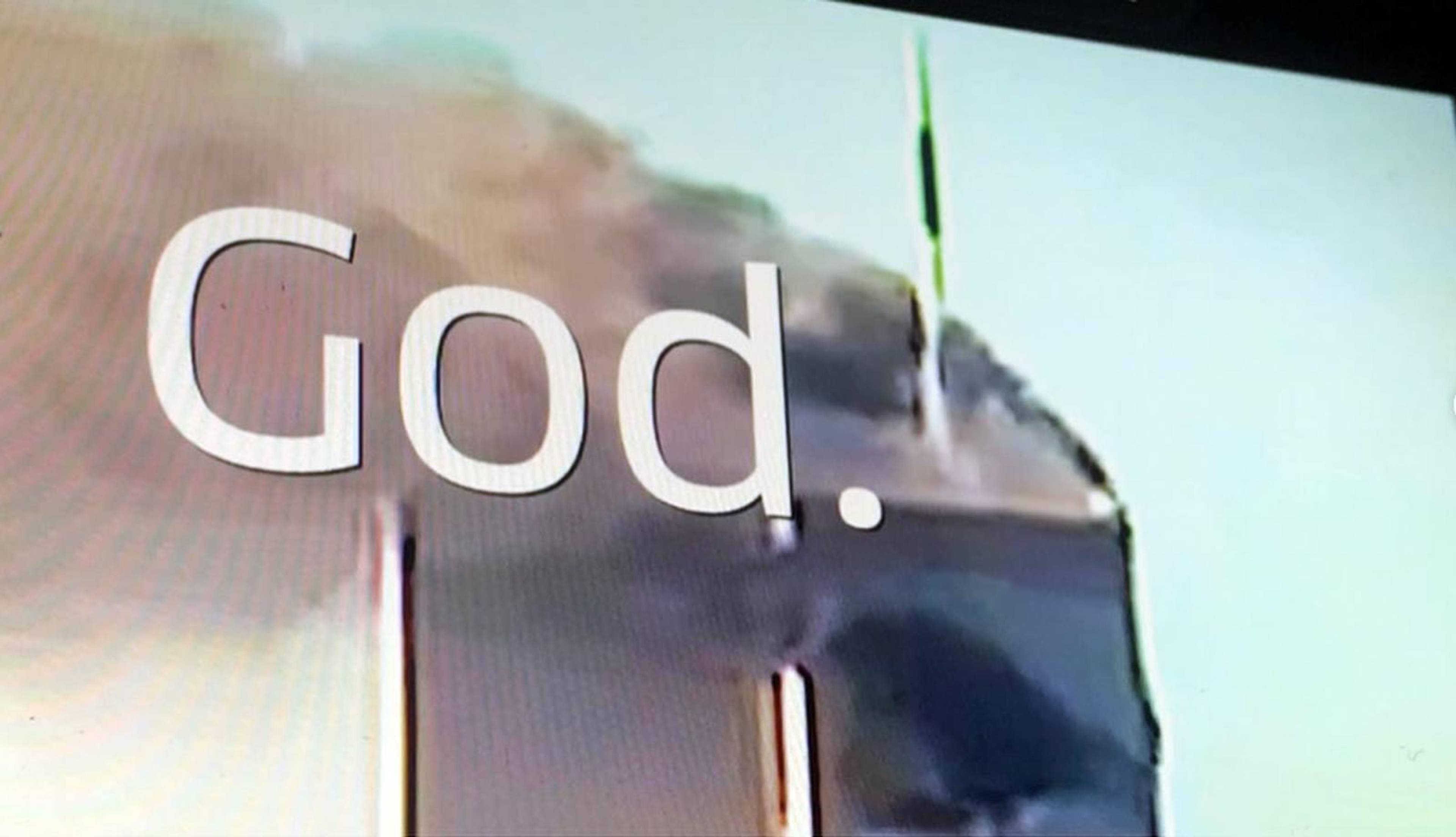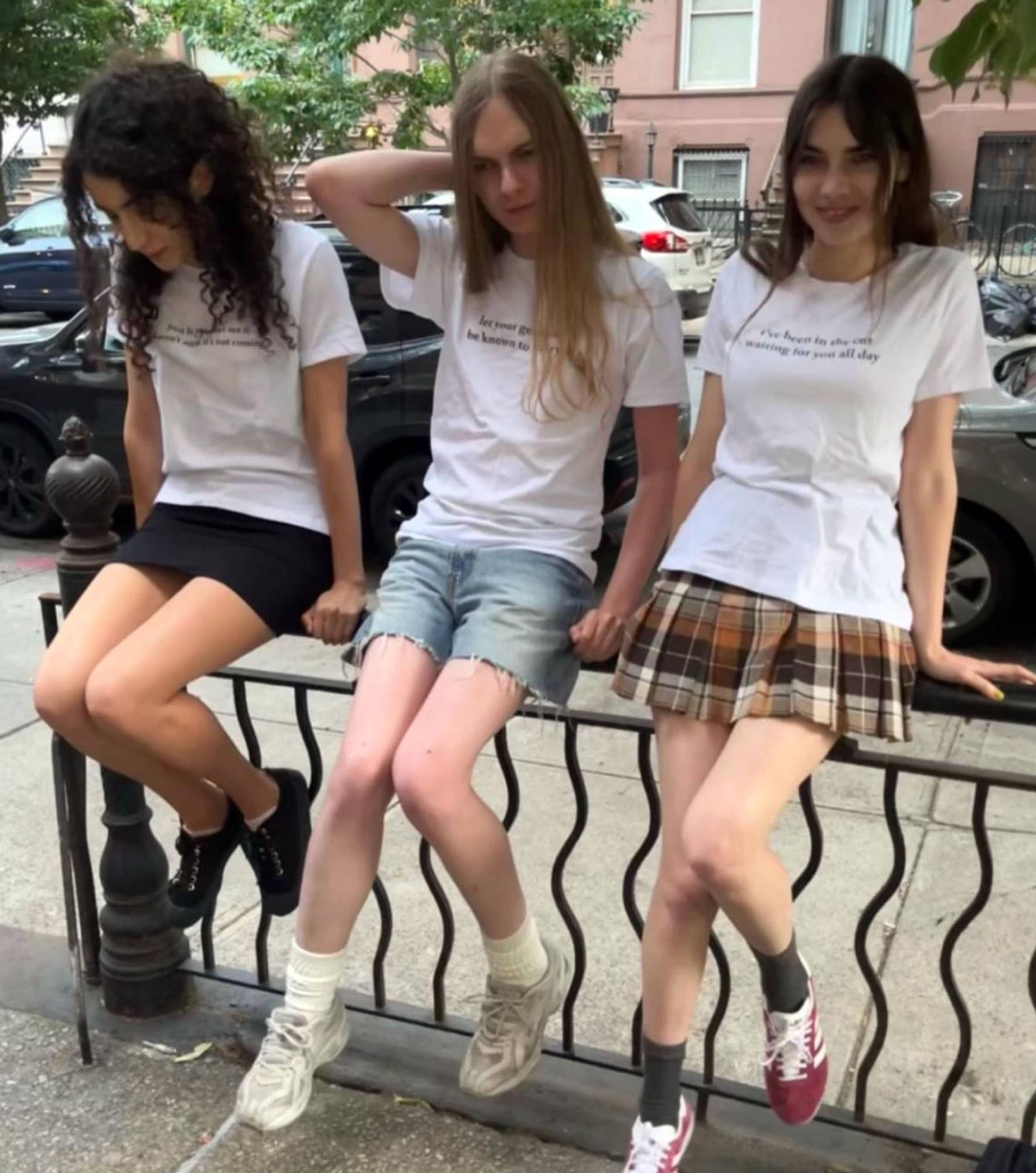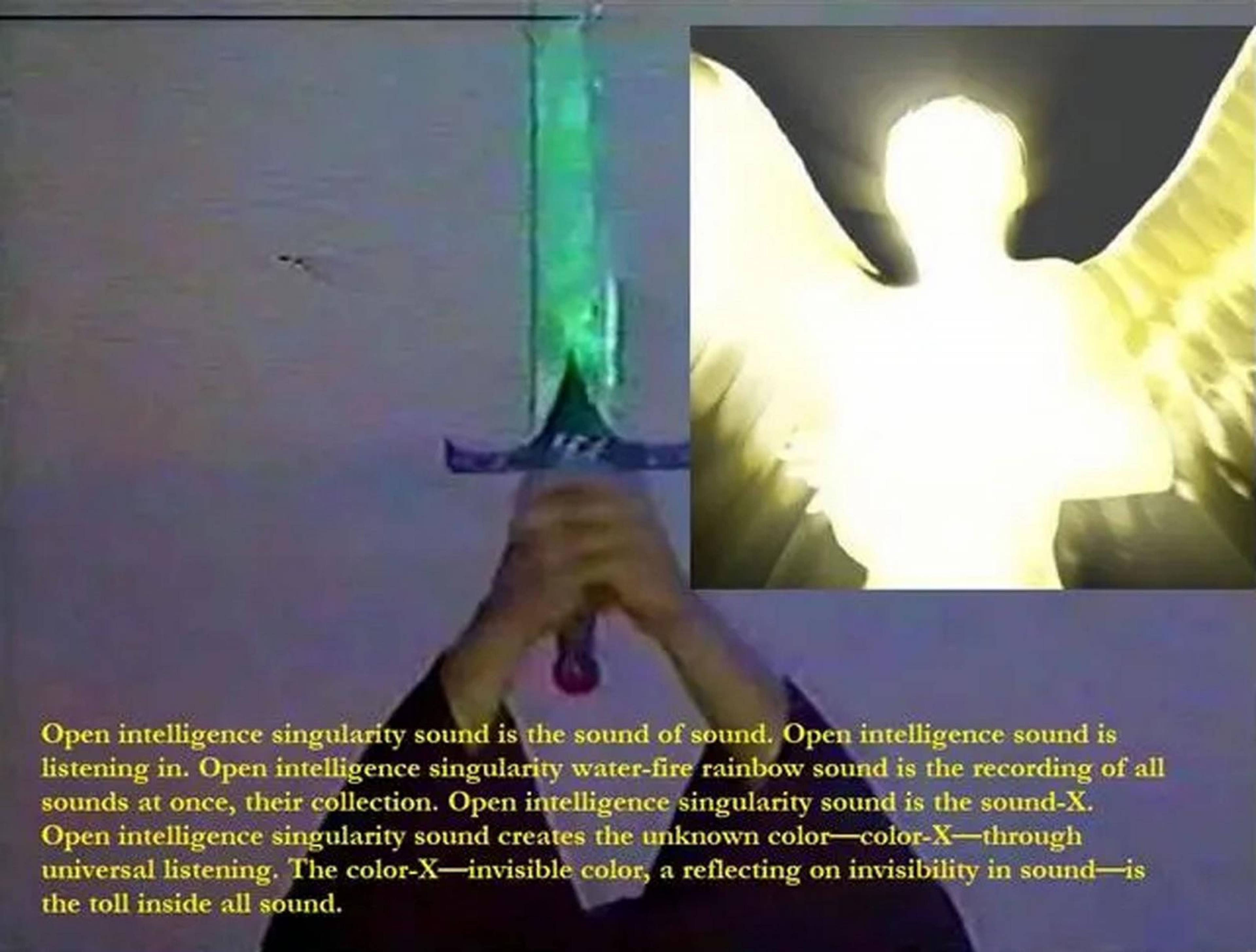Monday, 5 June was the world premiere of the entity, substacker, and cultural critic known as Angelicism01’s debut feature, Film01, at Anthology Film Archives’ Courthouse Theater in New York. To gain entry to the screening required submitting a questionnaire, a clearing a pre-approval process, and a waitlist. An email from angelicism01.326q explained: “We will contact you with the time of the screening on the morning of the 5th. We will then contact you with the location of the screening two hours in advance. There will be no +1s. We ask that you keep location information private for our safety, and that you refrain from sharing any photos or information about the premiere until it has ended.”
Monday, 5 June was the world premiere of the entity, substacker, and cultural critic known as Angelicism01’s debut feature, Film01, at Anthology Film Archives’ Courthouse Theater in New York
Morose rumors circulated that a mass shooting might occur at the theater. The high concentration of artists, It-girls, and cultural contributors presented a prime opportunity to eliminate the entire downtown-NYC microcosm. The pre-approval form’s insistence that “this is a place of peace” felt like a red herring. But instilling the fear of death and encouraging mass exodus is inherent to the Angelicism mythos. Angelicism employs the power of self-creation and self-mythology liberally. It builds reputation through lore. My co-editor and date for the evening, Anika Jade Levy, likens Angelicism’s lore-building to Trumpism in that both utilize “unhinged political speech” and “neologisms” and understand that “memes can provide a useful compression of theory.” She writes that Angie’s philosophy is “a patchwork of traditionalism, libertarianism, and environmental hysteria.”
There is a prolific body of work (in Spike and elsewhere) on Angelicism. Its philosophical but incoherent posting style, regurgitating references to Deleuze and Vajrayana Buddhism like logos, was seminal in the establishment of and discourse surrounding network spirituality. Some attribute the general vibe shift in New York to Angelicism’s microfocus on the downtown ecosystem: See the “Retard list,” this post that suggests waterboarding the staff of the Drunken Canal, etc.
Chloe Waifmaterial, Sierra Armor, and Mondina/Lola Jusidman
The team responsible for Film01 consisted of Monkfish, 1111111, Millime, lilith, and dansdans rev, as credited on the poster, while its listed runtime was a little over three hours – though apparently there is a “paradise cut” three times longer.
The film is one inscrutable montage of social media cuts, found footage, and vertical iPhone videos. It flits between images of cosplaying school girls laughing and crying, a livestream from Jordan Castro’s book party, footage from Shen Yun, crucifix manufacturing, voicemails from 9/11, rivers filled with trash, lambs walking to slaughter, Jean-Luc Godard talking about filmmaking, and a naked man explaining the end of the world. The proceeding is overlaid with music by Andres Bernal (War Criminal), chanting, and a reading of the poem “They Flee From Me” (1557) by Sir Thomas Wyatt. Half of our row made a cameo. There’s Aria and Dean and Honor and Walt. Local haunts appeared as well, like Dimes Deli, Clandestino, and, once or twice, my own apartment. At first, it resembled a documentary Adam Curtis would have made with access to Tiktok. Chloe Waifmaterial described the scenes as “epileptic episodes” and “an endurance test, assaulting every sense you have.” This is positive feedback. She “really enjoyed it.”
Within the first fifteen minutes, Anika asks if I think the film is pedophilic. We’re seeing girlhood flash across the screen: K-Pop stars’ synchronized dancing, school girls doing parkour, chibi PFP girls, young TikTokers primping, pursing their lips, and gazing at their own reflections in the screen, some of those very girls in the audience gazing back. The fast-paced aggregation of female imagery starts to lose meaning and gender. Essayist and critic Andrea Long Chu defines female as “any psychic operation in which the self is sacrificed to make room for the desires of another,” yet these girls’ selves are sacrificed and replaced not with desire, but with nothing. The void is palpable. The girls are empty avatars baton-twirling and sobbing and eating noodles. Through Tiktok and Instagram, in digital art and cinema, we’re voyeurs into the personal development of the young girl, frozen in time. Their youth is perennial. “Girlhood is less a state of being and more of becoming,” writes Heather Warren-Crow in Girlhood and the Plastic Image (2014). The film’s “protagonist,” the young girl on the internet, serves as a sort of transitory being. Ephemerality, temporality, and extinction are themes echoed through Angelicism’s substack. I don’t think the film is pedophilic, because the filmmaker’s gaze is not sexual or predatory, but cold, like a computer, keeping these girls in the cage of Film01 as symbols of youth and scarcity, unable to graduate to the next stage of development.
ULTIMATELY, THERE IS INFORMATION IN FILM01 – DARKNESS, STUPIDITY – ABOUT THE WAY WE LIVE NOW, BUT TRYING TO DERIVE MEANING FROM IT IS LIKE SQUEEZING BLOOD FROM A STONE.
Victoria Campbell receives this text early on in the screening:
“You have to decide whether you want to experience this. But plz know this: This is not a film screening. It's a cult-induction event. You will be kept there until you are dead tired, then shown hours of loud imagery and slow, dreamlike sequences. This is all designed to induce a trance/hypnosis. Then once the hypnosis phase is deep, they will move over to a chapter that is created by Charlotte Fang (disgraced cult-leader/pedophile) who will implant deep triggers and terrible, awful things (though they will look and sound beautiful). A Siren song. This is dangerous psychological warfare. Block your own eyes/ears as needed, like Odysseus who put wax in his ears and had his crew strap him to the mast so that he would not kill himself. Or exit the theater if you need. No matter what, stay in control. You will be less susceptible than others because you are not as young. For the 21 y/o's it is easier to induce. But you're still a person, and our brains are susceptible. Sorry you have to hear all this from me. /not a joke”
There is a difference between cult cinema and luring-you-into-a-cult cinema. “Cult” is a pejorative: It’s not actually a community or a club. Under the name Miya, Remilia Collective co-founder Charlotte Fang allegedly groomed a harem of e-girls with oppressive rules, such as restricted eating and encouraging self-harm. While there is a Fang-to-Angelecism pipeline – some of the same girls have jumped ship since Miya’s doxxing – Angie’s methodology is less direct, shrouded in esotericism, or what Paige K. Bradley, writing on Discord, calls “old hat horny fetishism for pubescent girls cloaked in deluzian [sic] sophistry.”
Screengrab from cashedcobrazhousewriter.substack.com
Good or evil, Angelicism is undeniably influential. “I wouldn’t live here if it weren't for Angelicism,” says Miss Waifmaterial, denizen of Chinatown and Angelicism acolyte. Originally from central Florida – “the same part of town as Tao Lin” – Angelicism put Chloe on the map. “It was the first to introduce me to this world.” Chloe says that Angelicism likes to collect fragments of people, and she was collected. Angie’s subjects, stars, and muses are a homogeneous group of white girls who came of age during the housing crisis and the Occupy movement, reaping the benefits of Angelicism’s online veneration in exchange for content, espousing its messages of fear, absolution, and extinction. Angelicism isn’t so much a director or leader of culture as its initiator. Toby Shorin says it best: “Making culture is about more than making music and making graphic design: it’s about making people. Cultures have their own language, objects, and knowledge; their own stories, aesthetics, practices, people, and places that all make sense together in a coherent way. That’s how a culture becomes part of your identity: you learn to use the language, you read the community lore online, you post photos with the same aesthetic.” As far as I know, the human behind Angelicism has not come out from behind the curtain, and these girls are kind of running the show. They’re curating and publishing their own images, drawing their own conclusions, working the door at the theater.
After the movie, everyone stood outside trying to make an astute observation. But conjecturing parallels to Hito Steyerl, Ryan Trecartin, and The Blair Witch Project (1999) gives the film far too much credit. Film01 could not even keep the attention of one of its main “stars,” Dasha Nekrasova, who left before the ending. @mondina explains how the film is not a “vibe shift yearbook reel,” when this is actually an apt summation. If there is anything redeeming to pull from the rubble of Dimes Square, it is not Film01. I’m reminded of David Foster Wallace critiquing Bret Easton Ellis:
“We'd probably most of us agree that these are dark times, and stupid ones, but do we need fiction that does nothing but dramatize how dark and stupid everything is? In dark times, the definition of good art would seem to be art that locates and applies CPR to those elements of what's human and magical that still live and glow despite the times' darkness.”
RECRUITING THE CAST OF DOWNTOWN NEW YORK WAS A CHEAP ENGAGEMENT TACTIC, TAPPING INTO THE SCENE’S LIBIDINAL NARCISSISM.
Ultimately, there is information in Film01 – darkness, stupidity – about the way we live now, but trying to derive meaning from it is like squeezing blood from a stone. It’s an unsophisticated collage of localized content that mimics, rather than intervenes or questions, our digital conditions. There is nothing nuanced about the gratuitous procession of explosions, climate-change detritus, and terrorist attacks. Recruiting the cast of downtown New York was a cheap engagement tactic, tapping into the scene’s libidinal narcissism. The viewers are baited into ascribing significance to the film because it’s ostensibly about them, like the paranoid schizophrenic who projects his own personal narrative onto the world at large to position himself at its center. But while the lore may suggest otherwise, this film is not pedophilic, occultist, or sinister by any real metric. The most harrowing thing about it is the runtime. Anika said the film resembled the internet itself. I found that it resembled the internet in that, if I stare at it too long, I start to feel sick. Victoria said the audience would have to dust off their Walter Benjamin anthologies. I say leave it on the shelf. The film doesn’t require deeper inspection: It’s just Art in the Age of Shut-ins. Towards the latter half of the movie, I wondered if the prognosticated shooting would occur so that I’d no longer be subjected to Film01.
When it comes to art in 2023, affect is more potent than meaning. A film doesn’t need coherent narrative or context to make us feel something. Geoffrey Mak pointed out that, on social media, we’re just feeling beings, “mindlessly reacting, laughing, crying or screaming.” While Angelicism’s writing spawned a cultural movement, I didn’t get the sense that Film01 had the capacity for great pathos, much less mind control.
The next day was “demonic” as Anika put it. Smoke from a Canadian forest fire had blown southward and turned the sun red. Our weather apps reported unsafe air quality. Breathing outside was the equivalent of “smoking six cigarettes.” News outlets instructed viewers and readers staying indoors, an ominous pandemic familiarity. New York City looked apocalyptic, post-nuclear, like the end of days that the naked TikToker foretold. “Wish I wasn’t so post-post woke and clearpilled – got rid of all my N95s…” a member of this cohort, davidy____, posted. Maybe Angie was right in predicting the extinction of a scene too apathetic to run from its own demise. In “No Apocalypse, Not Now” (1984), Derrida’s phrase “domesticate the terror” enjoins that, in order to express joy without nihilism, optimism without irony, we need to confront unpleasant truths about ourselves and our world. We may live to see man-made horrors beyond our comprehension – how, collectively, are we going to grapple with them? At the end of the world, which emoji would you hit? [crying laughing + astonished + hearts for eyes + single tear + hand clap OR tongue of fire?]
Perhaps Angelicism is just a vessel, a Ouija board without agency. It’s our hands that push the planchette and our hands responsible for the deranged, vapid, masochistic, antisemitic nihilism that results. Angelicism is a feature of the culture, not a bug. The Tiktoks, livestreams, and hell fires irrationally interconnected in Film01 already exist; Angie just suckered us into watching them for three consecutive hours.
Angelicism is a scary story, and we like to be scared. It makes us feel alive.
Image of Madeline Cash
___





